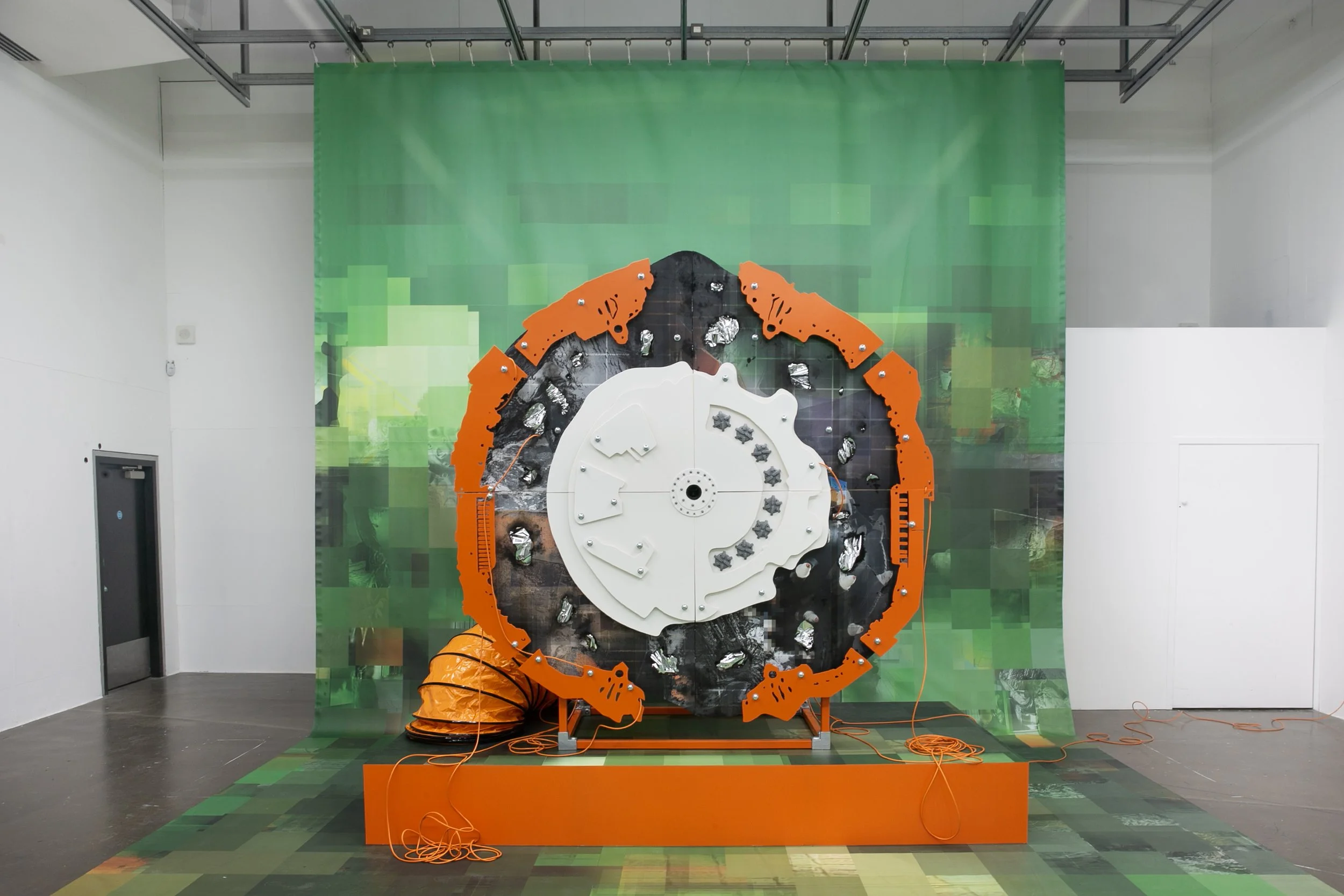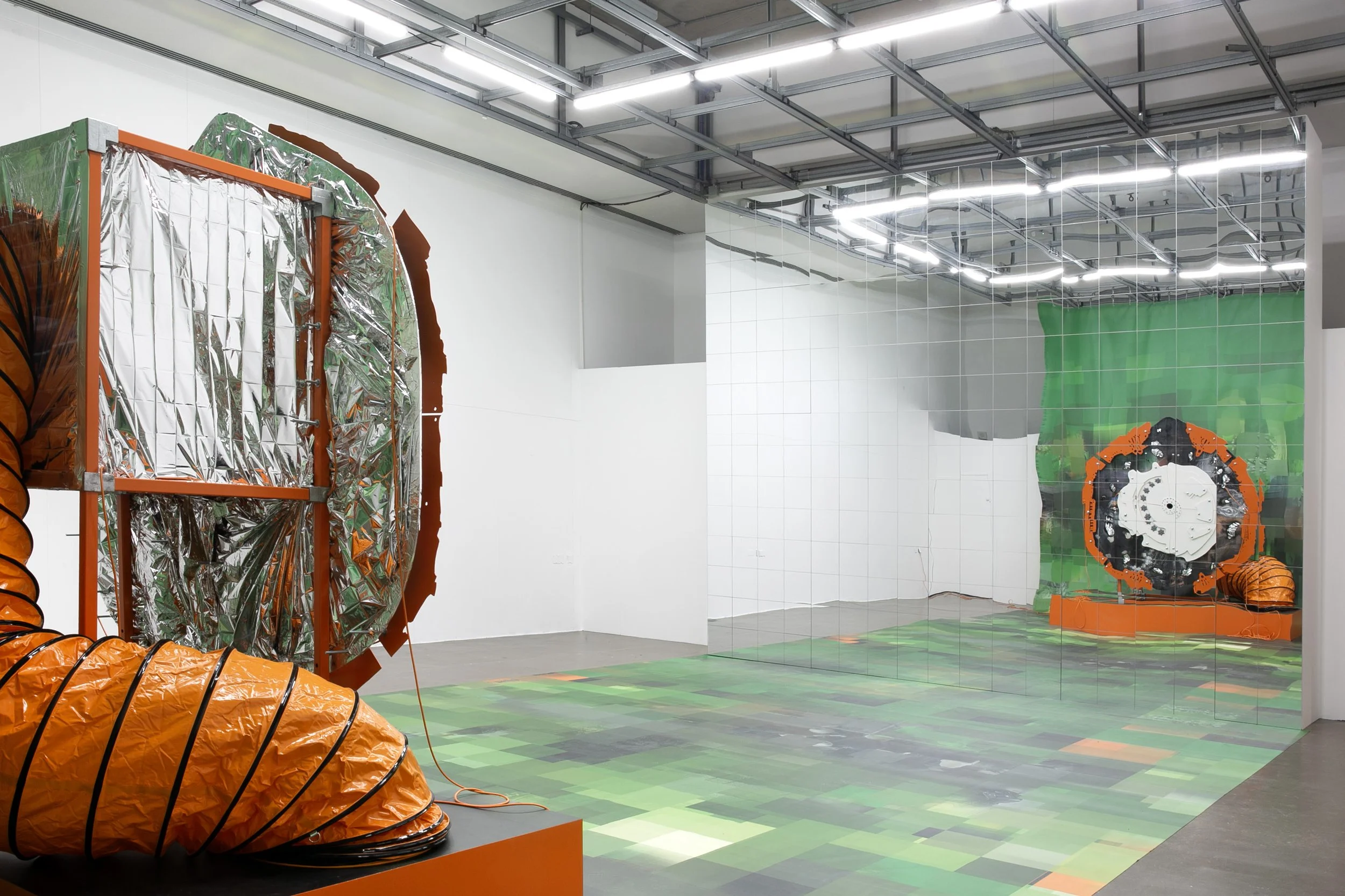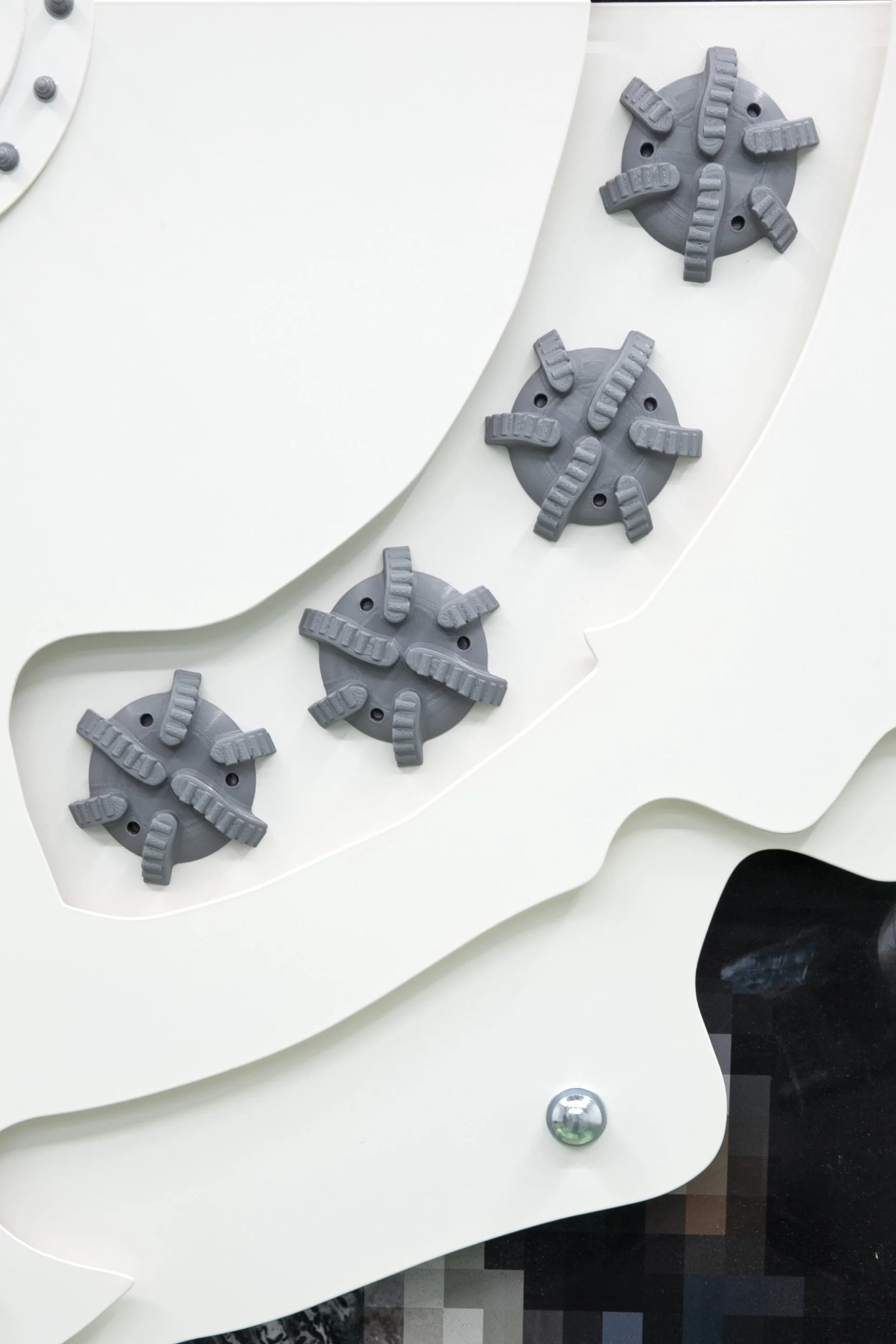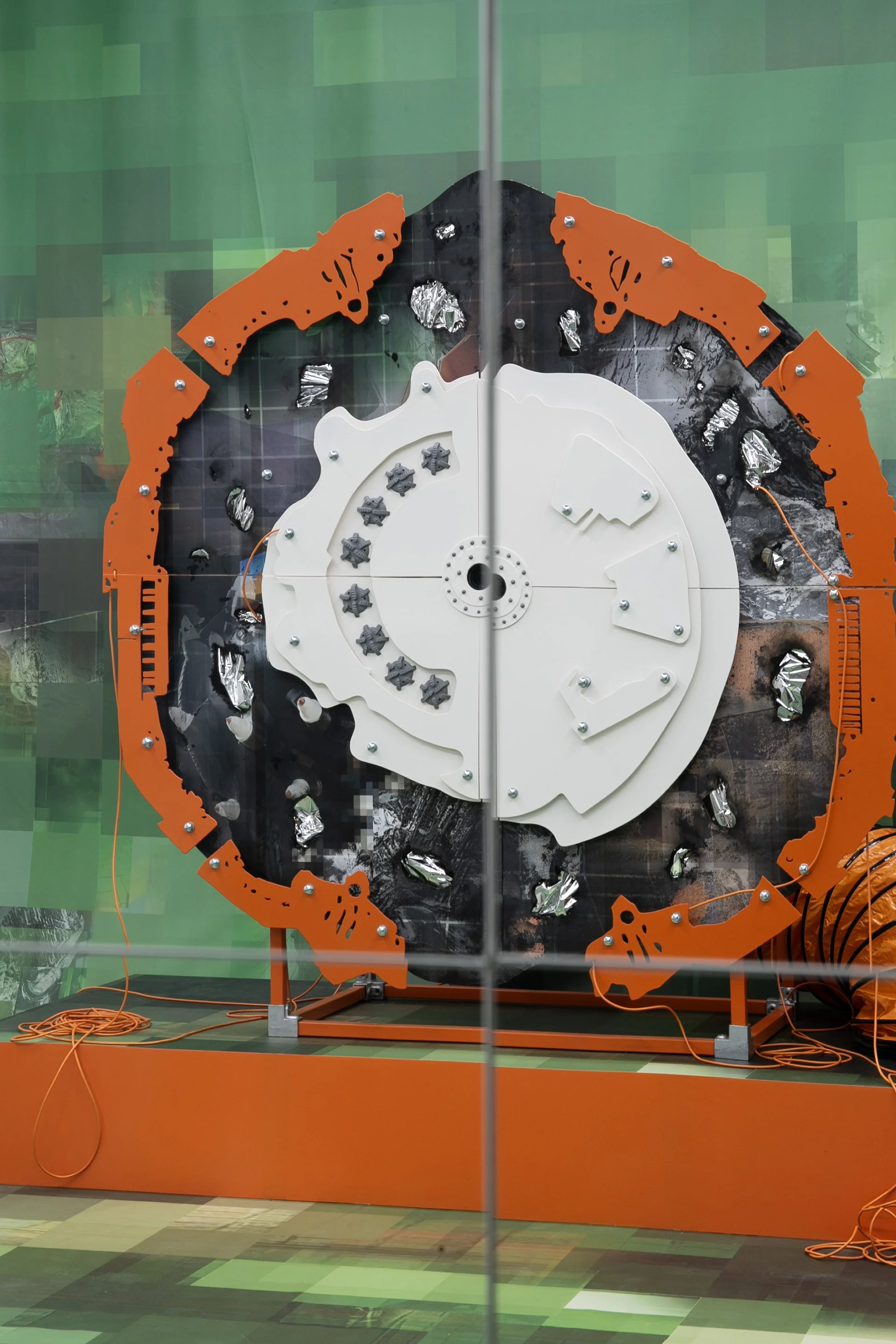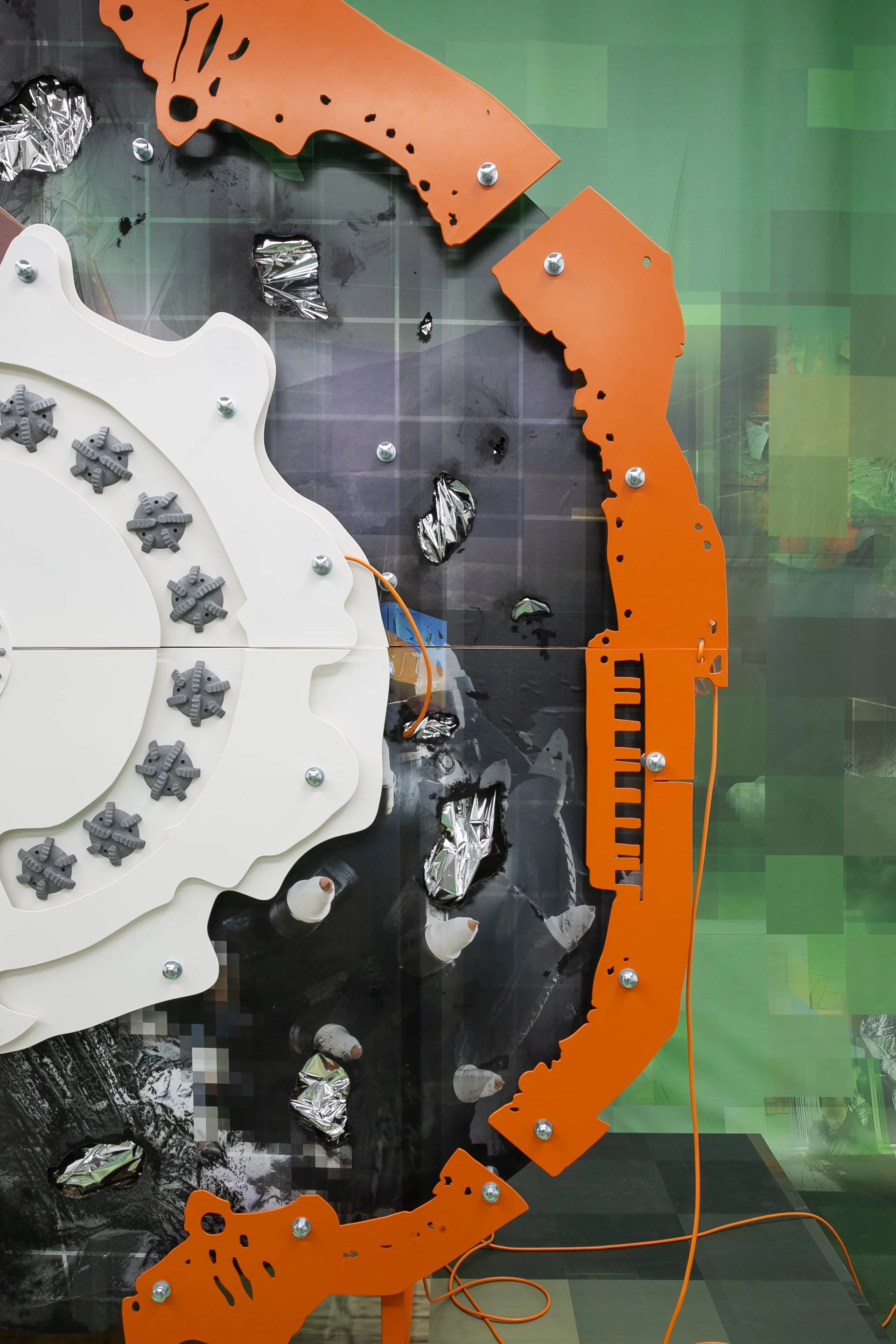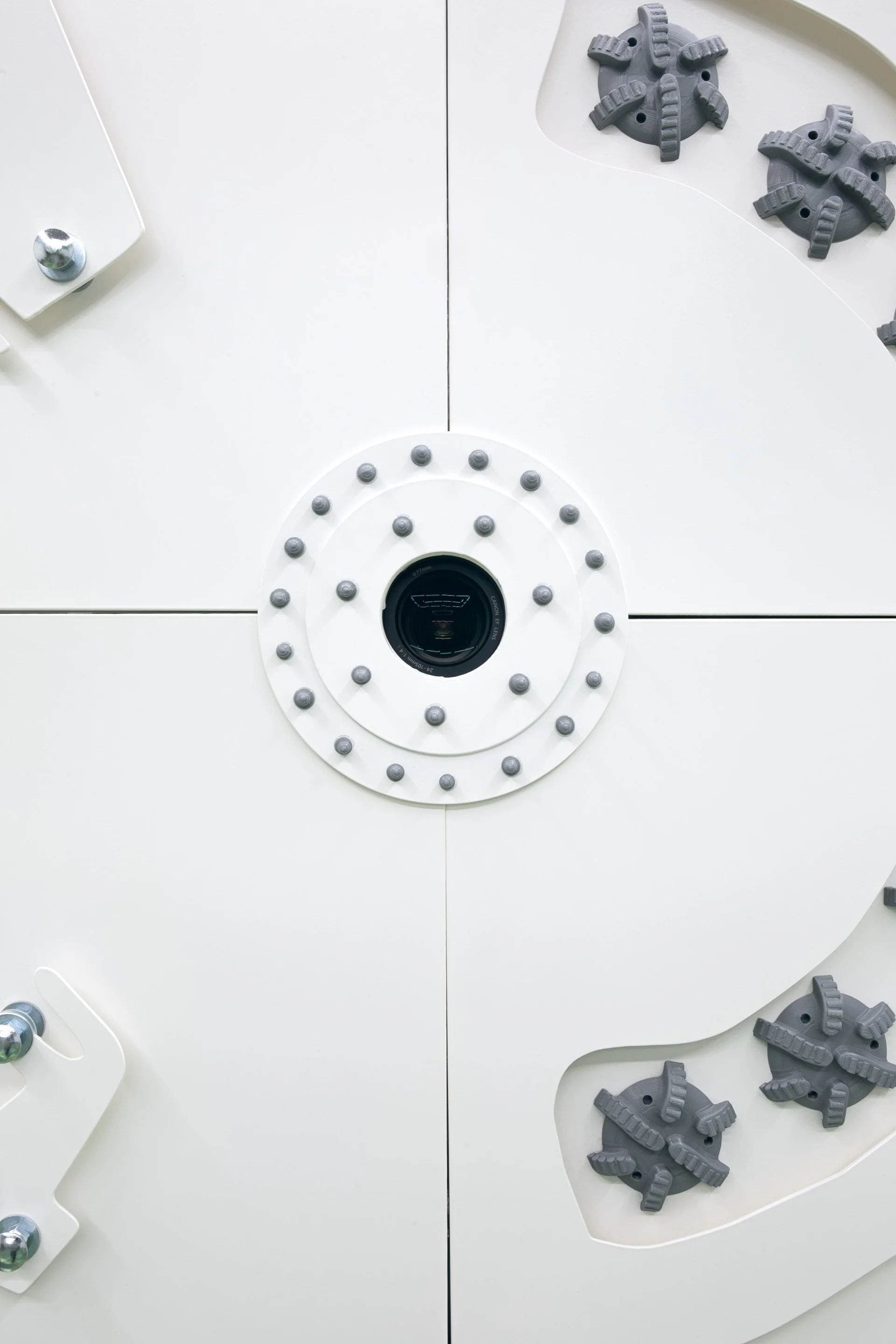VARIATIONS
Commissioned through the Ampersand/Photoworks fellowship, 2024-2025.
V2:RIGGED
Powder coated steel, powder coated aluminium, mdf, inkjet printed PVC banner and vinyl, paint, cable, camera, mirrors, PLA prints
Installation view, V2: RIGGED, Quad, Derby UK
Staged in four venues across the UK, Variations by Felicity Hammond is an evolving installation exploring the relationship between geological mining and data mining, image-making and machine learning. V2: Rigged is the second chapter of this project, following V1: Content Aware which was exhibited as a public realm installation as part of the Photoworks Weekender in Brighton, 2024. In Variations, Hammond uses the many landscapes associated with artificial intelligence (AI) to map how digital photographic material makes its journey from mineral to pixel; from the subsurface to the screen. The project aims to reflect on the entanglement of contemporary forms of image making - specifically those made using generative AI tools - with the politics of surveillance, data extraction, and the exploitation of land, resources and labour. Machine learning software relies on an ecosystem that extends far beyond the interfaces its users are presented with.
V2: Rigged - installed at QUAD as part of Format Festival - exposes how machine learning tools rely on a combination of mineral and data extraction. Crawford (2022) likens artificial intelligence to Lewis Mumford’s concept of the megamachine, where technological processes rely on industrial infrastructures that are kept opaque. This installation seeks to unveil the machine, asking the audience to confront and interact with the aggressive processes that enable machine learning tools to operate. Part camera, part drill head, part part processing plant, the machine at the centre of this installation performs the various violent acts of taking (from the brutal processes used to extract rare earth minerals to aggressive surveillance systems and the scraping of personal data) that lie at the centre of computational image-making. Rigs are associated with structures that support both mining and photographic tools; in this exhibition, the rig attempts to bring these processes together.
The installation includes a pixelated backdrop which depicts a photographic image emerging, in the process of being formed. The machine at the centre of the installation confronts an image of itself against this backdrop, by being placed in front of a mirrored wall. Taking photographs throughout the exhibition, the machine extracts further image data, building on its existing set - images of itself, images of the audience viewing the work, and images of the audience viewing themselves, where the act of looking and taking is central to the machine’s operation. This data will inform V3: Model collapse, the exhibition that follows.
Woven into the pixilated backdrop are AI generated images that were produced by finding the average image (or in reference to Hito Steyerl’s account of machine learning outputs), the mean image, of the photographic data from the first variation. In these images, men hold hybrid machines; cameras as weapons. The outputs of the machine learning based image generator - produced using the surveillance imagery and documentation of V1 - reveal the violence of the contemporary camera from within its own system. Sontag (1977) explores the analogous connection between camera and gun (we shoot, we aim, we load), and the images generated offer an amalgam of this metaphor, exposing the mechanisms associated with ‘shooting’ in its many forms. However, as Steyerl (2023) suggests, these images are not random hallucinations, they are ‘documentary expressions of society’s views of itself.’ The image is pre-determined, the image is rigged.
